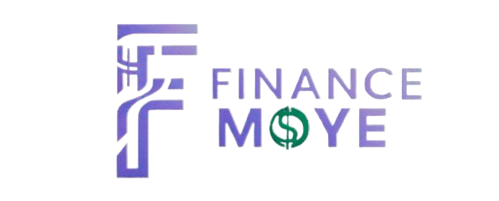FintechZoom NIO Stock: Key Drivers of Price Movements
NIO is one of the fastest growing electric vehicle companies in the world. Headquartered in Shanghai, China, NIO designs and develops high performance smart electric vehicles including luxury SUVs, sedans and autonomous cars.
In just over five years since its founding, NIO has emerged as a pioneer in the electric mobility revolution through relentless innovation. The company is currently valued at over $20 billion and delivers over 120,000 vehicles annually.
Often called the Tesla of China NIO differentiates itself through unique technologies and customer experiences. Its Battery as a Service model offers flexible subscription plans allowing owners to easily swap out depleted packs for fresh ones.
While competition in the automotive industry intensifies each year NIO’s progressive culture and vertically integrated operations give it an advantage. Continuous advances in areas like autonomous driving, renewable energy and connectivity position the brand at the forefront of future mobility trends.
Backed by leading global investors and the support of the Chinese government, NIO aims to disrupt automobile manufacturing worldwide. As automakers worldwide accelerate their EV transition, NIO is well placed to capture more market share both domestically and overseas in the coming decade.
Company Overview
Founded in 2014, NIO has witnessed immense growth over the past eight years to become a leading force in China’s premium EV market. Established in Shanghai, NIO began developing its first SUV, the ES8 which debuted in late 2017 to high acclaim. The following year the company went public on the New York Stock Exchange raising $1 billion to fund its manufacturing operations and innovation efforts.
Currently, NIO offers three electric SUV models to Chinese consumers. The ES8 is a large seven-seater that provides over 300 miles of range. Released in 2018 the smaller ES6 offers a similar experience but with five seats. Their newest entrant is the EC6 coupe SUV which blends sleek styling with an extended driving scope.
Beyond vehicles, NIO differentiates itself through its unique subscription-based batteries service known as Battery as a Service. Instead of buying batteries upfront, customers can opt to lease them separately and swap depleted packs for fully charged replacements at NIO swapping stations. This reduces the total cost of ownership while also lowering barrier to entry.
Financial Performance

So far, NIO has demonstrated a strong trajectory of financial growth that signals its viability in the long run. While still facing pressures common to early stage companies, NIO has been able to narrow its quarterly losses considerably through prudent cost optimization and scaling of delivery volumes.
In 2021, NIO delivered over 91,000 units representing a 109.3% year over year increase. This expansion drove the company’s revenues to RMB 35.76 billion for the year, increasing over 120% from 2020. Average selling prices also rose due to favorable sales mixes and price adjustments.
On the expense side, increased manufacturing efficiency and sourcing negotiations have lowered raw material costs significantly. NIO’s gross margins doubled from 10.4% in 2020 to over 20% by the end of 2021. Operating margins are also improving as fixed costs become distributed across a larger production base.
Strong delivery figures continued into early 2022, with over 25,000 vehicles sold in Q1. This solid demand helped NIO turn its first quarterly profit of RMB1.479 billion, representing a massive turnaround from the RMB1.14 billion net loss seen a year ago. The company’s cash balance also grew to over RMB39.2 billion, providing a solid cushion.
Product Lineup
| Vehicle Model | Seating Capacity | Range (Min) | Top Speed | Key Features |
|---|---|---|---|---|
| ES8 | 7 Seats | 405 km (251 mi) | 200 km/h (124 mph) | Largest SUV, state of the art driver assistance, retractable door handles |
| ES6 | 5 Seats | 510 km (317 mi) | 200 km/h (124 mph) | Compact dimensions, responsive acceleration, panoramic sunroof |
| EC6 | 5 Seats | 685 km (425 mi) | 200 km/h (124 mph) | Low drag coefficient, sports coupe design, futuristic interior |
NIO currently offers three electric SUV models that are tailored towards urban professionals and families in China. As shown above the ES8 full-size electric SUV was NIO’s first vehicle and remains the brand’s flagship.
The ES6 ranks as its most popular compact model attuned for younger customers. Both ES8 and ES6 have redefined China’s luxury electric SUV segment with their advanced technologies and luxurious interior spaces.
More recently, NIO launched the EC6 coupe SUV in 2021 to cater to a new demographic seeking sportier styling. With a low sleek profile and enhanced driving range the EC6 exemplifies NIO’s commitment to continuous innovation in vehicle segments.
Market Factors
Several macroeconomic trends have worked in NIO’s favor as the electric vehicle industry blossoms globally. China remains at the forefront of this revolution with a robust domestic market that is projected to grow over 25% annually through 2025. This rapid expansion creates ample opportunities for companies like NIO to achieve strong economies of scale.
Beyond its home base, surveys show European and North American consumers are increasingly prioritizing electric options in the wake of rising environmental and economic concerns. The total addressable global EV market is valued at over $6 trillion, spotlighting players with innovative product portfolios. With China targeting carbon neutrality by 2060, government initiatives like purchase subsidies also heavily support the nation’s local EV champions.
These supportive regulatory frameworks are a vital tailwind for companies navigating the transition away from legacy internal combustion vehicles. Growing charging infrastructure combined with falling battery pack prices year over year also bode well for attracting mainstream EV adoption. According to industry estimates, electric vehicles may represent over 50% of new car sales worldwide by 2040 if not sooner given accelerating momentum.
Competitive Landscape

While NIO has carved a unique identity among luxury electric SUV buyers, competition in the broader automotive industry remains fierce. Traditional automakers like Toyota, Volkswagen and General Motors are investing heavily to transition their lineups electrified powertrains in response to tightening emissions regulations.
Within the domestic Chinese market, homegrown rivals such as BYD Auto and Xpeng Motors have also surfaced as alternatives for consumers. BYD has penetrated segments with affordable plug-in hybrids and pure EVs powered by its own battery solutions. Xpeng matches NIO’s focus on tech forward vehicles and has seen its smart SUVs gain traction nationally.
Of course, Tesla’s expansive global Supercharger network and pioneering technology leadership gives it an enduring competitive advantage overseas. The Californian giant’s increasing incursion into China also threatens NIO’s premium perch though differentiated brand appeal has helped maintain customer loyalty thus far.
To defend its leadership position NIO will need to sustain its culture of relentless #innovation. Continuous improvements to battery innovation, autonomous driving capabilities and personalized smart cabin experiences will be vital to stay ahead of copycats. Establishing new partnerships along the electric #valuesupplychainforaccess to proprietary components can offset scale-based cost advantages too.
Investor Sentiment

As a publicly traded company, NIO’s share price movements are closely tied to prevailing investor emotions and market dynamics. Positive developments tend to buoy optimism while negative news or profit taking creates volatile dips.
In 2021, bullish sentiments reinforced by string sales deliveries and product releases enabled NIO stock to more than double in value on the New York Stock Exchange. Upgrades from renowned analysts at JP Morgan and Goldman Sachs further fueled gains, rewarding shareholders.
However, broader macroeconomic concerns related to inflation, interest rate hikes, and geopolitical tensions have periodically triggered downward corrections since late 2022. Waning risk appetite compounded worries over NIO’s ability to consistently achieve quarterly profits in this inflationary environment.
Real-time platforms like FintechZoom that comprehensively track automotive stocks have become invaluable resources for making informed decisions. Here, investors can access a wealth of timely data charts, earning reports as well as expert commentary to gauge industry headwinds.
Looking ahead, maintaining investor faith will require clear communication of NIO’s strategic roadmap and financial progress. Continuing vehicle sales beat analyst estimates quarter after quarter would restore confidence during market lulls. NIO management must also effectively underscore its prudent measures for mitigating cost pressures.
Investor Outlook
There are definite risks associated with an investment in NIO due to the volatility inherent to high-growth companies. However, many analysts maintain a bullish long term outlook if NIO can continue executing on its strategic initiatives.
BofA Securities believes NIO is well positioned to leverage China’s lead in the global transition to electric vehicles. With annual delivery volumes projected to exceed 200,000 by 2025, BofA estimates NIO achieving an operating margin above 10% and profitability of RMB20 billion.
Likewise, Citi analysts see China’s commitment to carbon neutrality sustaining strong tailwinds. With new product launches like the budget friendly ET5 on the horizon, Citi considers NIO a top play on the country’s EV revolution with an average price target of $55.
However, uncertainties remain around international expansion timelines and the pace of margin expansions. Goldman Sachs has a more cautious stance until NIO demonstrates a consistent ability to meet delivery guidance and profitability goals through economic cycles.
Stock Price History
NIO’s stock price trajectory since debuting on the NYSE in 2018 has been dynamic, reflecting both the high growth opportunities and uncertainties inherent in the electric vehicle market. Some notable price movements over time include:
- IPO in September 2018 at $6.26 per share. Initial investor enthusiasm saw prices climb above $10 before stabilizing.
- March 2019 low of $2.21. Investor concerns over cash burn dragged valuations down amid wider sector volatility.
- July 2020 rally to $17. robust deliveries and a product launch fueled optimism, gaining 145% in 2 months.
- January 2021 record high of $66. Favorable regulatory policies, delivery beats and analyst upgrades propelled the stock upward.
- June/July 2022 dip below $20. Recession fears, geopolitical tensions and inventory build up caused a sharp 50% correction from early year highs.
- October 2022 rebound to $25. Resilient sales and progress on building European production eased macroeconomic worries.
Management And Leadership
NIO’s success thus far can be credited in large part to the vision and expertise of its accomplished leadership team.
William Bin Li, Founder, Chairman & CEO
With over 25 years of experience in the technology and automotive sectors, Bin Li serves as the architect of NIO’s long term strategy. He brings extensive management experience from founding multiple other startups, guiding NIO’s transformation into a leading global brand.
Rui (Jason) He, President
Formerly a senior executive at Tencent, Jason He oversees NIO’s day to day operations with a focus on expanding into new markets. He plays an integral role in financial management, partnership development and maximizing delivery efficiencies.
Steven Feng, CFO
A veteran finance executive with expertise in capital markets, Steven Feng is instrumental in strengthening NIO’s balance sheet through prudent fund raising. He spearheads strategic investments and ensures optimal capital allocation.
Lihong Qin, SVP Of Battery Strategy
As a world renowned battery expert, Dr. Qin oversees all aspects of battery technology R&D from chemistries to vehicle integration. His leadership has resulted in pioneering innovations like battery swapping and ultra-fast charging.
Risk Factors
While NIO’s future appears bright, there are risk factors that investors must be aware of:
- Commercial Viability: As an early-stage company, NIO has yet to consistently achieve annual net profits at scale. Dependency on financial markets remains high.
- Competitive Landscape: Traditional automakers are catching up through significant investments in EVs. New global competitors also emerging rapidly.
- Battery Technology Risks: Battery costs, chemistry advancements and reliability can impact margins if not managed prudently long-term.
- Macroeconomic Conditions: A global recession may dampen consumer demand in China and abroad. Rising inflation also increases operating expenses.
- International Expansion: Entering new markets involves unforeseen regulations, supply chain disruptions and cultural barriers. Profitability abroad remains uncertain.
- Regulatory Changes: Shifting EV policies in China could influence subsidies, tax benefits currently boosting NIO’s competitiveness and margins.
- Exchange Rate Volatility: Translating yuan financials to dollars exposes NIO to currency market fluctuations beyond management’s control.
- Contract Manufacturing: NIO relies partly on third-party manufacturers for vehicles. Dependencies may impact Quality, costs if relationships are disrupted.
- Cybersecurity Risks: As software/AI features expand, potential network or data vulnerabilities need constant attention and mitigation.
Expansion Plans
While China remains NIO’s core market, the company has clear ambitions to grow internationally and capture greater share of the rapidly expanding global EV landscape.
Europe
After successful pilot launches, NIO began full commercial deliveries of its ES8 luxury electric SUV to Norway in late 2020. Over 1,000 vehicles have since been delivered to eager customers in Norway, Germany, Switzerland, Denmark and more.
With European populations receptive to high-performance electric options, NIO opened its first flagship store and service center in Oslo in 2021. More retail locations in major countries will follow as production capabilities increase.
Asia
Countries like Japan and South Korea boast dense urban populations and automotive prowess, making them natural targets. NIO aims to introduce its marquee vehicles and battery-swapping solutions across Asia to burnish its international presence.
North America
Massive investments are underwriting construction of a wholly-owned US factory to circumvent tariffs and support prospective North American deliveries in the future. Over time, strategic city launches are envisioned to roll out.
Strategic Partnerships
To minimize risks while maximizing opportunities, NIO has strategically partnered with leading organizations across various sectors of its business operations.
Manufacturing
Working with JAC Motors a major state owned automaker, boosts Nio’s production capacity through access to existing vehicle plants and skilled labor resources.
Battery Technology
CATL, the world’s largest battery maker is an exclusive long-term supplier for NIO batteries. Their collaboration drives continuous cell chemistry advancements.
Charging Infrastructure
Through partnerships with Shell and Chargepoint, drivers can conveniently power up NIO cars at compatible stations internationally.
Supply Chain Optimization
Strategic alliances with Bosch, Magna and Faurecia facilitate localized sourcing of automotive components to optimize costs.
Connected Features
Intel’s Mobileye division supports development of NIO autonomous driving capabilities through provisioning of advanced mapping systems.
Software Expertise
Partners like Microsoft ensure seamless over the air software updates and integration of AI based services into the NIO driver experience.
Innovation Pipeline
Having established itself as an industry leader through continuous technological breakthroughs, NIO is working to expand its portfolio of future forward solutions:
ET5 Sedan (Released 2022)
Targeting a broader customer demographic, the ET5 debuted as NIO’s most affordable model yet. Its minimalist design and over 1000km range make it a strong competitor.
150kWh Solid State Battery (2023)
Next-gen solid state battery R&D is underway with partner SES to drastically boost vehicle range while slashing recharging times to under 20 minutes.
Autonomous Driving (2024 Goal)
Level 3 self-driving capability will soon undergo road testing utilizing NIO’s proprietary sensing hardware and Niopilot software stack developed with Intel’s Mobileye.
Swapping Station V2.0 (2025)
Stations that automatically swap full battery packs in under 3 minutes without human assistance aim to eliminate range anxiety and downtime.
Air (2030 Concept)
An ambitious flying car prototype showcases NIO’s vision for future 3D mobility through an electric VTOL design capable of vertical take off and landing.
Investment Analysis
For investors seeking leverage to the booming EV sector, NIO presents a compelling opportunity. However, it is important to understand both upside potential and risks.
Upside Case
- Dominant Chinese EV player well-positioned for industry growth of 25%+ annually through 2025.
- Continuous innovation of vehicles, batteries, autonomous driving and other software features.
- International expansion gaining momentum with European deliveries scaling up.
- Cost efficiencies from maturing factories and supply chains improving margins over time.
- Favorable regulatory environment and government support of electrification in China.
Downside Risks
- Potential macroeconomic downturns dampening near-term demand and profit targets.
- Intensifying competition from global automakers and local EV startups.
- Delays or setbacks in technology R&D roadmaps like solid state batteries.
- Supply chain disruptions, cost inflation or other barriers affecting operations.
- Regulatory changes reducing EV subsidies and economic uncertainties.
- Further capital requirements to fund international capacity expansion plans.
Conclusion
NIO has established itself as a leading EV brand in China through innovative products and customer experiences. While macroeconomic headwinds exist, expanding production capabilities and strategic partnerships should facilitate continued growth. Government support for electrification and rising consumer demand for EVs are positive drivers.
For investors with an appetite for disruptive tech companies, NIO presents an attractive play in China’s large automotive market undergoing profound transformation. Execution on international plans and new product releases will be key to realizing its long-term potential and generating sustainable returns.
FAQs
Can Nio Stock Reach $100?
It’s possible but not guaranteed. Reaching $100 would require strong and consistent execution of plans as well as continued growth in EV industry and China’s economy.
Does NIO Stock have a Future?
Yes, as a leading EV player in China with continuous innovation, there is potential for NIO stock to appreciate long-term.
What is NIO Stock Prediction for 2025?
Analyst projections vary but generally in the $40-60 range, assuming 25%+ annual delivery growth and improved profitability metrics are met.
What is the price target for JP Morgan NIO?
JP Morgan recently raised their NIO price target to $40 per share, citing favorable policies and competitive product portfolio supporting market share gains.






